We needed to add four new workstations to our Foliovision office in Bratislava. In my experience working on quiet computers really increases the productivity, so originally we were considering laptops. After quite a bit of thinking and research we’ve made the decisions to base our computers on Intel’s Core 2 Duo chipsets, as they’re fast and cool (they run almost at half of the temperature of their AMD alternatives).
WHY DUAL CORE
I’ve found dual processors to be great for design and internet related tasks, as you can leave an upload running in the background while still working at full speed in a text editor or browser. If the Core 2 Duo is good enough for Apple, we decided it was the choice for us. Going with a budget chip would save you a $100 or $150 on the unit but at the cost of additional heat, noise and problems.
After doing up a budget for Intel Core 2 Duo laptops and desktops, we found laptops would have:
- smaller screens (1440×990 versus 1680×1050)
- smaller and slower hard drives (80 GB versus 200 GB)
- much higher price tag (25,000 SKK ~ $900 versus 17,000 SKK ~ $625, including Samsung 20” 205 monitors)
- would be much harder/more expensive to repair
We also thought long and hard about whether we needed or wanted to be moving our computers around. We already have three laptops in the company so we already have some portable units – if we need them. And we found that portability was a small concern. The guys didn’t feel like taking their work home for the weekend or to Switzerland for holiday. Why should they? Always having your work with you can be the bane of one’s life, costing peace of mind and whole relationships.
So desktops would give us bigger screens for less money. The final big advantage is that if a laptop breaks down it goes into service for four weeks. With a desktop we just buy and replace the broken part and wait for a replacement from the manufacturer which goes into the spare part cupboard – almost zero downtime. So we went out and bought desktops and hoped they wouldn’t be too loud. Here are the specifications:
- Intel® Pentium Dual Core E2160 (1,8 GHz, 1MB L2 Cache, 800 MHz FSB)
- GeForce 7200 128 MB DVI with TV-Out
- Hard drive 160 GB 7200rpm SATA
- RAM 1024 MB DDR2
- DVD/RW Dual double layer recorder
- Gigabit LAN, Floppy 3.5”
- Keyboard and optical mouse.
Agem Intelligence 5300 as they come straight from the supplier.
And these computers are fast.
Unfortunately with four of them on, the site promotion room sounded like the deck of an aircraft carrier. This was just not going to work. Balázs went to work experimenting. Luckily the guys at Agem didn’t make it impossible for us, to take the computer apart, the screws were easy to remove, the cables weren’t glued in the harddrive, etc. The CPU fan didn’t seem to make much sound at all. Part of the problem was an internal fan in the case, but the biggest noise was coming from the power supply.
This power supply was the source of all our problems.
The fan on the CPU.
The internal fan in the case.
We started looking at the silent computer sites. We found really good information at silentpcreview.com, buildsilentpc.com and hardcoreware.net. First order of business was to change the power supply. One of the possibilities was to purchase something like the so called PICO PSU, which needs only an adapter similar to laptops and makes very little or noise at all. We were a bit worried about if it is capable of delivering all the necessary power because of the lack of proper information on the manufacturers site. Luckily we found this great PC wattage calculator tool, from which we were able to figure out our needs specifically. Unfortunately there was no distributor in Slovakia, so we had to go for something else.
After additional research, we’ve finally found our best best. It’s definitely a more expensive, but fully professional solution: the fanless Fortron PFC ZEN (2500 Sk / 100 USD + VAT) high quality convection power supply. Happily enough it was available from the distributor from whom we bought the computers ( Agem ). The power supply has a Active PFC circuit, full range input, real no noise design with 0dBs on full load and a dual 12V rail output for ensuring the consistency of the voltage rails. The excellent heat dissipation is achieved with partial mesh casing and conventional heat transfer. Here are the details:
- Dimension: 140×150 x 86mm
- Efficiency: > 89%
- Color: blue
- Noise: full load =0dB
- P.G. Signal: 100-500ms
- Over voltage: 5V trip point < +7.0V
- Protection: +3.3V trip point < 4.5V
- Recycle AC to reset: +12V trip point < +15.6V
- Input voltage: Full range
- Input frequency range: 47-63 Hz
- Input current: 1.5~3.0A
- Hold–up time: 17ms
Fortron PFC ZEN fanless power supply. We do recommend it.
Nonetheless, this supply looks really really cool given to its beautiful blue design. The cables from it are very well organized into small tubes, which also aids the air circulation inside the case. As we said before, these units make absolutely no noise and look great.
You can see the heatsinks inside.
The inexpensive cases turned out to be very well designed for silent computing as well. The power supply fits snugly at the top of the case at the back and top. This means all heat goes out the back and top of the computer never going near the CPU (main processor) or the GPU (graphics processing unit). This is a big improvement on Apple’s design for instance which puts the power supply at the bottom of the case (G5’s, new Intel towers) where they cook everything above them all day long, making the fans run and drawing lots of dirt and dust into the power supply.
The final configurations we use now after all the changed components.
We have changed graphics card to MSI RX2400 Pro, partially because I had bad experience with nVidia cards before and would rather have something else. The internal Intel 950 chipset would have worked out just fine, but it isn’t capable of running my big screens resolution (2560 x 1600) and it was important that all the workstations are identical for the purposes of maintenance.
- ATI Radeon HD 2400PRO chipset
- 256 MB, GDDR2 memory
- DirectX10 support
- Heatsink solution (zero noise)
- 525 MHz Core Clock (GPU)
- 800 MHz Memory Clock
- Supports Crossfire
The graphics card has passive cooling. Good news for us.
After all these changes we were a bit worries that the PC’s might overheat, so we were running several benchmarking tests for about two weeks.
Original configuration
Monitoring the temperatures with RivaTuner, SpeedFan, Hardware Sensors Monitor and Rightmark CPU Clock Utility.
You can see the CPU and the Mainboard temperatures have risen, but they’re still within normal values. A GPU temperature of 62 °C isn’t the best, but it’s still within an acceptable range. Luckily there’s no need for any noisy fans. Other users have reported temperatures around 90 °C without crashes.
In the end, everything turned out really well. Now we have a very quiet, great workplace that allows an increasing productivity, and we would surely advice for everyone to do the same.

Alec Kinnear
Alec has been helping businesses succeed online since 2000. Alec is an SEM expert with a background in advertising, as a former Head of Television for Grey Moscow and Senior Television Producer for Bates, Saatchi and Saatchi Russia.
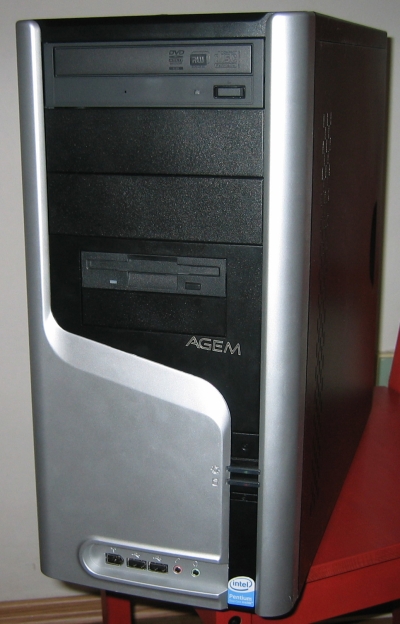
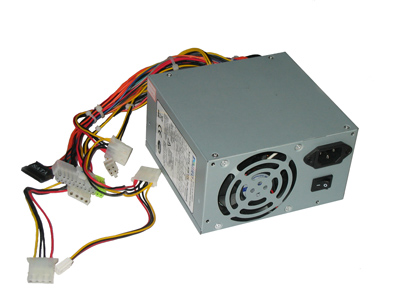
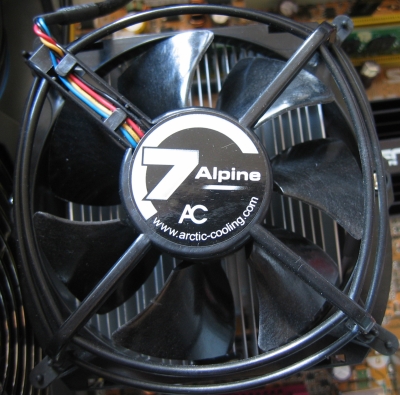
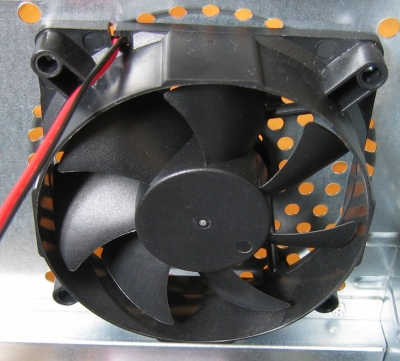
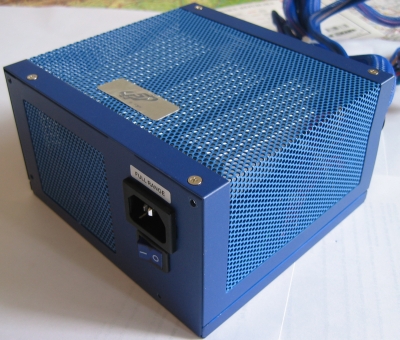
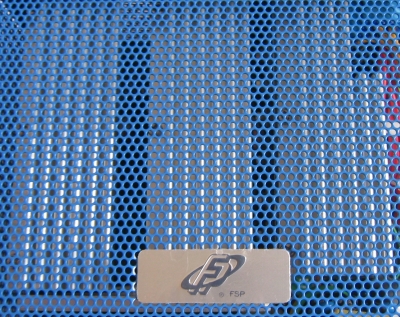
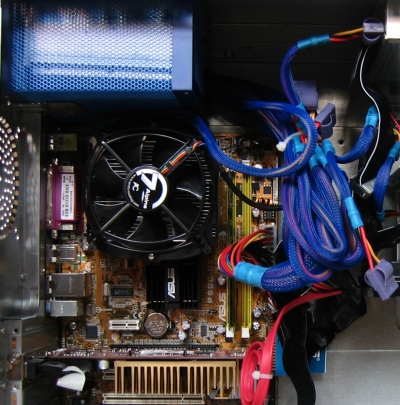
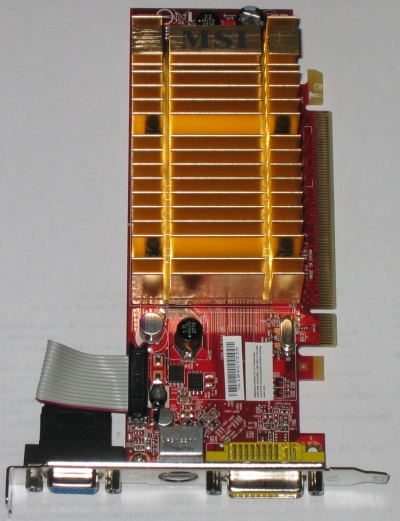
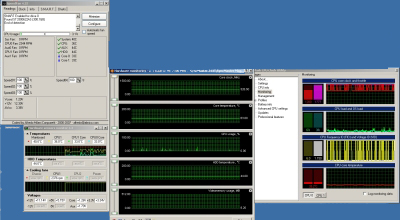
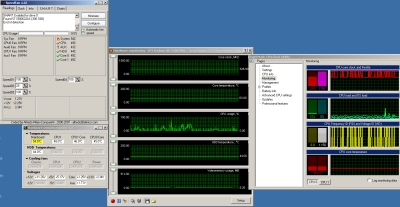

The best way to have a quiet ans silent computer is to buy a Mac. it’s just what i did, I will never go back to Pcs again.
Actually DRH, my silent PC’s are much quieter than any Mac I know of except a Powerbook with a silent 4200 RPM drive.
I managed to live with a Sawtooth DP 500 quiet happily but suffered with both a G4 DP 1.25 (revised Quicksilver) and a G5 DP 2.5 GHz. The latter had liquid cooling but was horribly loud, even with the processors tuned down to 2.0 GHz (with the help of CPU Speed Menu from the brilliant Marcel Bresink of Tinkertool fame).
Our silent PC’s are really silent. Hard drive noise only.
(In fairness, on the Quad processor we do have an ultra quiet special custom copper fan. But the copper fan is quieter than a hard drive. And that’s running with a half open case to improve air circulation.)
What I don’t like about Macs and silent computing, is that it is so difficult to change and adjust the fans and cooling. With a PC if you want to spend an extra $30 and have a really silent fan, you have that option.
We are running an office with seven computers in it and not a whisper from a single one most of the day.
Nice guide, however, most people do not have the money to buy a totally fanless PSU. Moreover, most fanless PSU’s cannot handle the load of a high end system. Luckily, most of the high quality PSU’s out there today are fairly quiet.
Also, I want to add that replacing the cheapo punch out 80mm fan holes with a chrome fan grill will make a HUGE difference in both sound and airflow, especially if you have a high rpm fan.
Cheers
Specs: Silent Tuned | 3D Marks 06: 11566 Q6600 2.4ghz CPU | Gigabyte GA-P35 LGA 775 MB EVGA 8800gt 512mb Video Card G.Skill 4GB Ram | Western Digital 400GB HD X-Fi Xtrememusic Sound Card Antec P180B Case | Evercool Sharks HSF CM Real Power Pro 650watt PSU
Hello Eric,
The best way to get a lot of air in there is just to leave the side door off the case. Apart from the hard core video card (that 8800 GPU is sucking down 80 watts alone), most powerful modern systems can run just fine on the Zen power supply.
We actually drop the Zen (or equivalent) into even our least expensive computers. Silence has no price.
No ATI cards as the good ones tend to require heavy duty fans.
Amazingly enough one can acquire even an Nvidia 8800 which is almost fanless (MSI’s zilent model). Although there I’m starting to agree with you about costs going through the roof.
Good to know that there are some high end users who appreciate (relative) quiet in their computers.
Yeah, the 8800gt is pretty power hungry, but my Real Power Pro 650watt PSU handles it quite nicely. The fan rarely kicks up.
What do you recommend for a quiet yet powerful CPU heatsink for the Q6600. I am looking at the Scythe Ninja and Tuniq tower right now.
The best way to get a lot of air in there is just to leave the side door off the case. Apart from the hard core video card (that 8800 GPU is sucking down 80 watts alone), most powerful modern systems can run just fine on the Zen power supply.
Agreed, a good cpu heatsink is where you need to be, that and adjusting your bios so the fan speed relates to cpu usage and hence temp. I use a 3.6 hyperthreaded processor now (bit old these days), and every time the load upped, so did the noise from the Intel fan. With a good replacement, i can hardly hear anything at all.
I would be most grateful for a recommendation for a stock desktop P.C. in the $400 to $600 range that is relatively quiet. I would be willing to make some changes, e.g. power supply, but can’t afford much. Is any Intel processor better than AMD in terms of heat? Is the Core 2 Duo chipset way better than other Intel chips in terms of heat generation? Also, would a cooling tray and fan replacement maybe help significantly to quiet my laptop (2002 Sony Vaio) — or other things I might do with a laptop? (I have “hyperacusis” i.e. diminished resistace to sound, and tinnitus exacerbated by sound.) Thanks a lot for any help. ericqb @msn.com eric tel. 650 575 2599
Hi Eric,
Really you should be building from scratch yourself. You get longer guarantees on the components as well (2 to 5 years) as opposed to an assembled PC.
If you do the above, your PC will be next to silent.
Straight out of the box, we’ve been very satisfied with our MacMinis. You can also make MacMinis boot Windows if you must (but you might
Previous generation MacMinis are available for as little as $500 (2GHz Core2Duo with Nvidia 9400). Great solution out of the box. Take up next to zero space. There is a fan but it isn’t audible.
We bought five of them to cover our expansion.